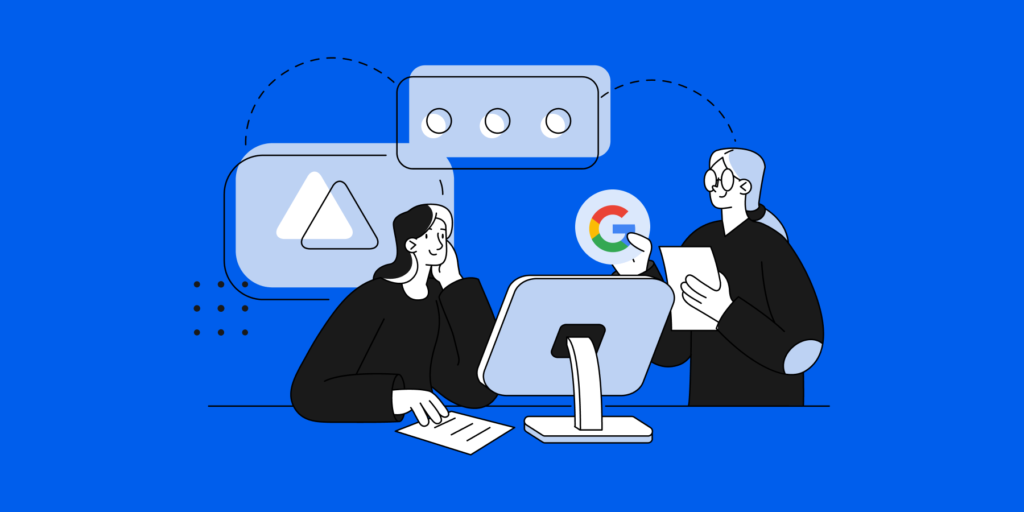Welcome back to the final installment of our “Auditing Your Google Workspace” series. Over the course of this series, we’ve explored a variety of audits essential for maintaining a secure and productive digital workspace. In this concluding piece, we focus on the significance of regular reviews, a practice crucial for ensuring ongoing compliance and security in the ever-evolving cloud environment.

The Necessity of Regular Audits
The dynamic landscape of cloud computing means configurations, user access rights, and external threats are constantly evolving. Regular audits are vital to identify and address these changes promptly, ensuring that your Google Workspace remains secure and compliant.
By routinely checking your systems, you can catch potential issues before they escalate into real problems.
🔔 Enhance your audit effectiveness with our Free Google Workspace Auditing Task List —a must-have for every admin
Types of Audits Covered in the Series
Over the course of our “Auditing Your Google Workspace” series, we’ve explored a wide array of audits, each crucial for safeguarding and optimizing your Google Workspace.
Here’s a recap to ensure you have a holistic view of how each audit contributes to a robust digital workspace strategy:
- Access Management Audits: Evaluate who has access to what within your Google Workspace. By doing so, you ensure that only the right people have the right levels of access.
- Administrator Role Audits: Focus on the permissions and roles assigned to administrators to prevent excessive privileges and potential insider threats.
- Security Audits: Examine how data is protected, focusing on aspects like data encryption, sharing settings, and storage security.
- Application Audits: Review third-party applications integrated with your Google Workspace to manage risks associated with external software.
- Drive and Shared Drive Audits: Review the usage and sharing settings of Google Drive and Shared Drives to control data dissemination and safeguard sensitive information.
- Email Security and Compliance Audits: Specific to how emails are handled, focusing on protecting against phishing, ensuring proper email routing, and maintaining compliance with data protection laws.
- Compliance Audits: Ensure your Workspace complies with relevant legal and regulatory requirements, such as GDPR, HIPAA, or any region-specific legislation.
- Training and Policy Audits: Assess the effectiveness of training programs and the enforcement of security policies. This helps you to mitigate risks associated with human error.
- Google Workspace Audits: Detailed inspection of the entire Workspace to uncover security threats, ensure compliance, and optimize operations through regular monitoring of audit logs and health checks.
- Regular Review Audits: The final piece, emphasizes the importance of continual audits to maintain the security and compliance standards established through previous audits.
Integrating these audits into a regular review schedule ensures that your organization remains on the cutting edge of security and compliance, prepared to adapt to new challenges and changes in the regulatory landscape.

The Power of Regular Reviews: Beyond the Initial Audit
While an initial Google Workspace audit offers a valuable snapshot of your environment’s health, its true potential lies in regular follow-ups.
Here’s why scheduling recurring audits is crucial:
- 1. Evolving Threats: The cybersecurity landscape is constantly changing. New threats emerge, and existing ones adapt. For instance, recent supply chain attacks highlight the importance of regularly reviewing third-party applications integrated with your Workspace to identify potential vulnerabilities.
- Regular audits ensure you stay ahead of the curve by identifying new vulnerabilities and adjusting your security posture accordingly.
- 2. Dynamic Workspaces: As your organization grows and evolves, so does your Google Workspace environment. Regular audits ensure your security measures adapt to these changes, safeguarding your data and user activity.
3. Accountability and Visibility: Regular audits provide a documented record of your Workspace’s security and compliance posture. This ongoing record demonstrates your commitment to data security and facilitates communication with stakeholders.
Making Regular Reviews a Habit: Scheduling for Success
The frequency of your Google Workspace audits depends on the size and nature of your organization. However, a best practice is to conduct them quarterly or biannually.
GAT+ reports, however, offer greater flexibility. You can schedule these reports to be generated monthly, quarterly, biannually, or even weekly, allowing you to tailor reporting frequency to your specific needs.
These comprehensive reports provide a written record and health check for your Workspace environment. Moreover, they give you a clear picture of its security posture.
Investing in a Secure Future: The Takeaway
Regular Google Workspace audits are an invaluable investment in the security and compliance of your organization. By incorporating a variety of audit types into your routine, you gain a comprehensive understanding of your environment’s health. You can then identify potential threats, and ensure adherence to data security regulations.
Remember, a secure Workspace environment fosters trust, protects sensitive data, and empowers your organization to thrive in the digital age.
Finally, don’t let security gaps compromise your business. Download our free Auditing Guide today and embrace the gift of ongoing security and compliance.
Stay in the loop
Sign up to our newsletter to get notified whenever a freshly baked blog post is out of our content oven.






